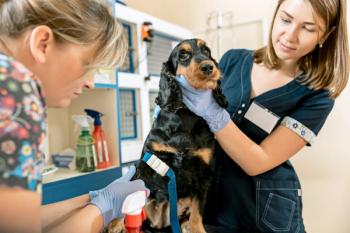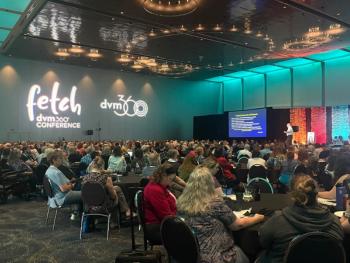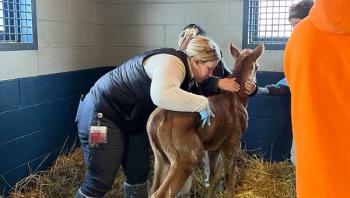
AVMA flexes political muscle with PAC
Washington —When Dr. Michael Chaddock attended a recent luncheon for Sen. Sam Brownback, he was escorted to a seat beside the lawmaker and briefed him on the nation's need for more rural DVMs.
WASHINGTON —When Dr. Michael Chaddock attended a recent luncheon for Sen. Sam Brownback, he was escorted to a seat beside the lawmaker and briefed him on the nation's need for more rural DVMs.
Executive Board OKs publication of sow housing paper
Soon after, the National Veterinary Medical Services Act received $750,000 in Congressional support. Brownback sits on the Senate appropriations committee. He also received $5,000 in campaign contributions from the American Veterinary Medical Association's (AVMA) Political Action Committee (PAC).
Chaddock, director of the AVMA's Governmental Relations Division, says PAC support doesn't buy votes — it buys access. The goal, he says, is to turn AVMA's "respectable" $500,000 PAC into a $1-million powerhouse by 2008.
"The PAC allows us to pool our money together to become more influential politically," Chaddock says. "It's the way government works. Promoting veterinary medicine's issues is a huge job. If you don't have a strong PAC, you're not in the game."
Upcoming plans
Strengthening the PAC means garnering more AVMA membership support, which officials affirmed during the association's annual meeting in Minneapolis. "Size matters in Washington," Chaddock says, so PAC officials are working on branding, increasing donor solicitations and upping suggested support from $50 to $75 on AVMA dues statements. The majority of donors support the AVMA PAC this way, officials report.
A two-year marketing strategy also is underway, starting with member education. According to PAC reports, three tactics have been identified:
- Updating educational brochures for veterinarians that discuss the legislative and regulatory processes;
- Developing and distributing a bimonthly newsletter for veterinarians interested in Washington politics; and
- Expanding the profession's grassroots network by establishing a legislative coordinator in each state that will provide Senate and congressional contacts.
"I know there are veterinarians who see legislators' pets," Chaddock says. "Personal relationships are always the most affective means to getting across messages."
Donations correspond with gender
Statistics show male veterinarians are more interested in touting their messages via the PAC, contributing $3 of every $4 donated. PAC officials attribute this to age rather than gender, noting that older veterinarians are more likely to donate rather than the younger, and mostly female, veterinary population.
"Comparing the giving of male and female members who have graduated in the most recent 10 years shows that members of both genders give equal numbers and have virtually similar average gift sizes," a PAC marketing report says.
The average contribution of the older membership segment is almost three times larger than those of recent graduates, the report adds.
Marketing
To increase donations among all sectors, a PAC brand position has been issued via an official statement:
"To AVMA members, the AVMA PAC is the organization seeking donations that has the most effective and direct impact on federal legislation and regulation, which affects veterinarian's day-to-day lives."
A logo or graphic treatment is not a brand, the report says, but is the vessel that carries the elements of that brand. The PAC Policy Board is charged with reviewing the group's visual identification. The tag line "accessibility, influence, impact!" also has been added.
Promoting AVMA-influenced legislative successes is the best way to market the PAC, the report says.
"Because veterinarians tend to be humble and unassuming people, successes are downplayed," the report says. "Though it may go against the association's instincts, in order to strengthen the case for support, legislative and regulatory successes must be loudly celebrated and every ounce of credit claimed."
Newsletter
From exam room tips to practice management insights, get trusted veterinary news delivered straight to your inbox—subscribe to dvm360.




